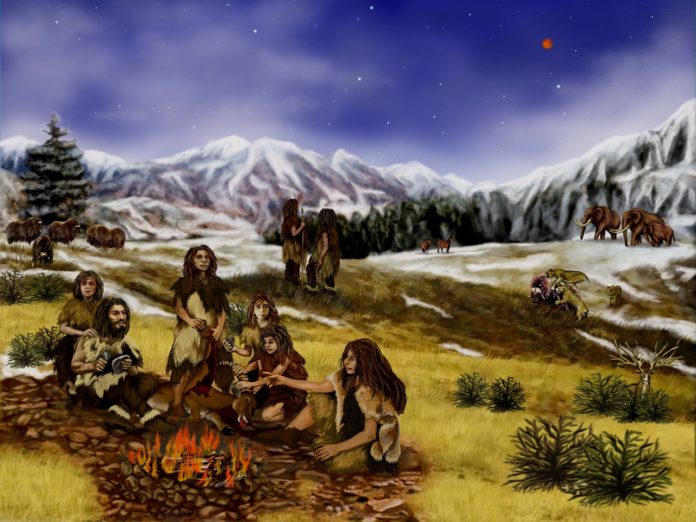
DNA that we inherited from Neanderthals helps protect us against various diseases like influenza and hepatitis
It was a result of interbreeding between Neanderthals and modern humans which took place about 50,000 years ago, that we inherited genetic defences against viral diseases.
These include infections such as hepatitis and influenza, a study has found.
Just before the modern human species was about to spread globally they came into contact with Neanderthals. As a result of this union, most modern Europeans and Asians or for that matter almost every human outside African continent harbour about two per cent of Neanderthal DNA in his/her genomes.
Neanderthal genes likely gave us some protection against viruses that our ancestors encountered when they left Africa
Neanderthals mysteriously disappeared about 40,000 years ago.
Curiously, some snippets of Neanderthal DNA pop up more often in modern human populations than others, leading scientists to wonder if their spread was propelled by chance or whether these frequently occurring genes confer some functional advantage.
Stanford scientists have now found compelling evidence of the latter. “Our research shows that a substantial number of frequently occurring Neanderthal DNA snippets were adaptive for a very cool reason,” said evolutionary biologist Dmitri Petrov, Michelle and Kevin Douglas Professor in the School of Humanities and Sciences. “Neanderthal genes likely gave us some protection against viruses that our ancestors encountered when they left Africa.”
When first contact occurred between the two species, Neanderthals had been living outside of Africa for hundreds of thousands of years, giving their immune systems ample time to evolve defenses against infectious viruses in Europe and Asia. Our newly emigrated ancestors, by comparison, would have been much more vulnerable. “It made much more sense for modern humans to just borrow the already adapted genetic defenses from Neanderthals rather than waiting for their own adaptive mutations to develop, which would have taken much more time,” said David Enard, a former postdoctoral fellow in Petrov’s lab.
Persistent genes
The scientists reached their conclusions after compiling a list of more than 4,500 genes in modern humans that are known to interact in some way with viruses. Enard then checked his list against a database of sequenced Neanderthal DNA and identified 152 fragments of those genes from modern humans that were also present in Neanderthals.
The scientists showed that in modern humans, the 152 genes we inherited from Neanderthals interact with modern day HIV, influenza A and hepatitis C – all types of RNA virus. From this, Enard and Petrov concluded that these genes helped our ancestors fend off ancient RNA viruses that they encountered upon leaving Africa.
Interestingly, the Neanderthal genes they identified are present only in modern Europeans, suggesting that different viruses influenced genetic swapping between Neanderthals and the ancient ancestors of today’s Asians. This makes sense, Enard said, since interbreeding between Neanderthals and modern humans is thought to have occurred multiple times and in multiple locales throughout prehistory, and different viruses were likely involved in each instance.














[…] We inherited genetic defences against viral diseases like hepatitis and influenza as a result of interbreeding between Neanderthals and humansRead More […]
[…] We inherited genetic defences against viral diseases like hepatitis and influenza as a result of interbreeding between Neanderthals and humansRead More […]
[…] We inherited genetic defences against viral diseases like hepatitis and influenza as a result of interbreeding between Neanderthals and humansRead More […]
[…] Read More […]
[…] We inherited genetic defences against viral diseases like hepatitis and influenza as a result of interbreeding between Neanderthals and humansRead More […]
[…] (adsbygoogle = window.adsbygoogle || []).push({}); Source link […]
Comments are closed.